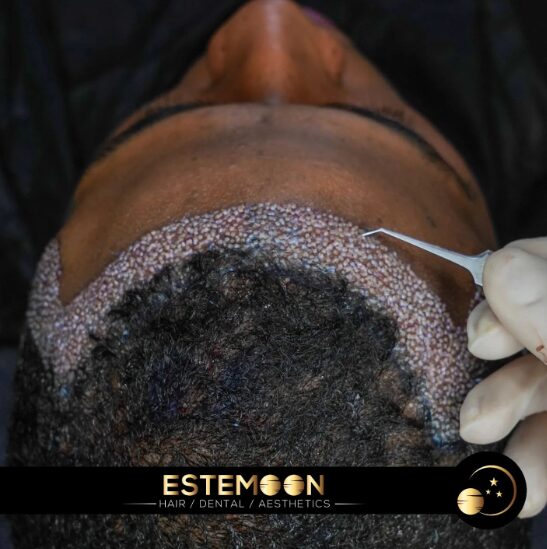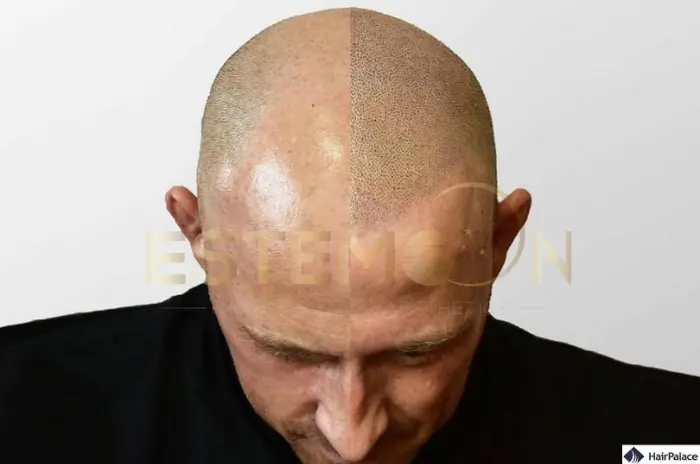If you’re considering a hair transplant in Albania, it’s crucial to understand the recovery time and what to expect during this period. Whether you’re traveling from abroad or are a local, knowing the details about recovery can help you plan accordingly and ensure a smooth process. Here’s a comprehensive guide to hair transplant recovery time and what you should know before embarking on your journey.
Understanding Hair Transplant Procedures
Before diving into recovery specifics, it’s important to understand the two main types of hair transplants: Follicular Unit Extraction (FUE) and Direct Hair Implantation (DHI).
- FUE: This technique involves extracting individual hair follicles from a donor area and implanting them into the thinning or balding areas of the scalp. It’s minimally invasive and typically has a quicker recovery time compared to older methods.
- DHI: Similar to FUE, DHI involves the extraction of hair follicles but uses a specialized tool to implant them directly into the scalp without creating recipient sites beforehand. This method may offer faster healing and less discomfort.
Immediate Post-Procedure Care
Your journey begins right after the transplant procedure. Here’s what you can expect in the immediate aftermath:
- First 24-48 Hours:
- Rest: It’s essential to rest and avoid strenuous activities. You may experience some swelling and mild discomfort, which can be managed with prescribed medications.
- Head Care: Keep your head elevated to minimize swelling. Avoid touching or scratching the transplanted area.
- Day 3-7:
- Washing: After a few days, you will be instructed on how to gently wash your hair. Avoid using hot water and harsh shampoos.
- Avoid Direct Sunlight: Protect your scalp from direct sunlight. Wearing a hat or using sunscreen recommended by your doctor is advised.
- Day 7-14:
- Scab Removal: Scabs will start to fall off naturally. Avoid picking at them to prevent infection and ensure proper healing.
- Normal Activities: You can resume most normal activities, but it’s still wise to avoid vigorous exercise.
Hair Transplant Recovery Timeline
- Weeks 1-2:
- Initial Healing: The transplanted area will start to heal, but you may experience redness and mild swelling. This is normal and will subside as your scalp heals.
- Shedding Phase: It’s common for transplanted hairs to fall out within the first few weeks. This is part of the natural hair growth cycle and should not be a cause for concern.
- Weeks 3-6:
- New Hair Growth: Small, fine hairs will begin to grow. Patience is key as this stage is crucial for setting the foundation for new hair growth.
- Regular Follow-Up: Schedule follow-up visits with your clinic to monitor progress and address any concerns.
- Months 2-4:
- Visible Growth: You’ll start seeing noticeable hair growth, although it may be sporadic. Full results take time, and the transplanted hair will continue to grow and thicken over the coming months.
- Months 6-12:
- Full Results: By the 6-month mark, you should see significant improvements in hair density. Full results may take up to 12 months, depending on individual healing and hair growth cycles.
Things to Consider Before Traveling to Albania
- Pre-Travel Preparations:
- Consultation: Ensure you have a thorough consultation with your chosen clinic. Understand the procedure, recovery process, and aftercare requirements.
- Travel Arrangements: Plan your travel to allow enough time for recovery. Consider staying in Albania for at least a week post-procedure to attend follow-up appointments.
- Post-Travel Care:
- Local Support: If you’re traveling from abroad, having local support or a travel companion can be helpful. They can assist with logistics and provide support during recovery.
- Follow-Up Care: Confirm your follow-up care arrangements with your clinic. Ensure you have contact details for any post-procedure questions or concerns.
- Health and Safety:
- Insurance: Check your travel insurance to cover medical procedures abroad. Ensure it includes coverage for potential complications.
- Medical History: Inform your clinic of any pre-existing conditions or medications you’re taking. This information is crucial for a safe and effective procedure.
Conclusion
Understanding the recovery time and process for a hair transplant is essential for anyone considering this procedure, especially when traveling to a different country like Albania. By preparing adequately and following post-procedure care instructions, you can ensure a smooth recovery and achieve the best possible results. With proper planning and care, you’ll be well on your way to a fuller head of hair and greater confidence.



